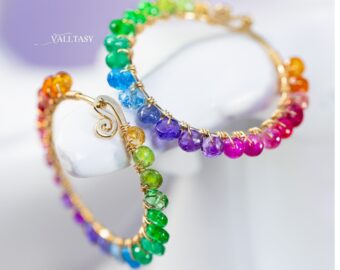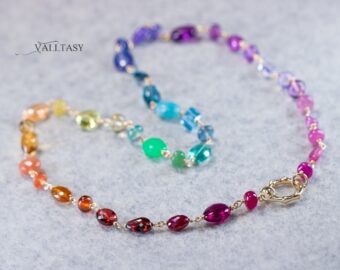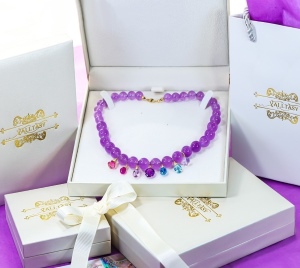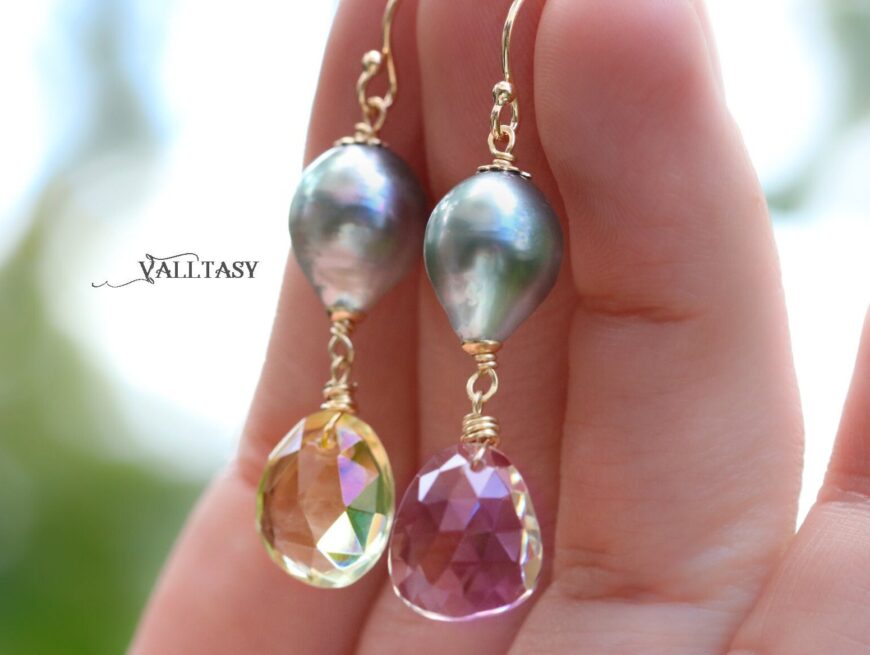No items in the cart
Blog
How to Tell if Pearls are Real: A Comprehensive Guide
Pearls have captivated human imagination for millennia, adorning royalty and symbolizing elegance across cultures. However, with the rise of sophisticated imitations, knowing how to tell if pearls are real has become increasingly challenging. Whether you’re a jewelry enthusiast, a potential buyer, or simply curious about that family heirloom, this guide will equip you with the knowledge to determine if your pearls are authentic.
The Fascinating World of Pearls
Before diving into identification methods, let’s briefly explore what makes pearls so unique. Natural pearls form when an irritant, such as a grain of sand, enters an oyster or mussel. The mollusk secretes layers of nacre – a combination of calcium carbonate and protein – around the irritant, eventually forming a pearl. Cultured pearls follow a similar process but with human intervention to insert the irritant.
Types of Pearls
- Natural Pearls: Extremely rare and valuable, formed without human intervention.
- Cultured Pearls: The most common type in jewelry, including Akoya, South Sea, Tahitian, and freshwater varieties.
- Imitation Pearls: Man-made objects designed to mimic the appearance of pearls, often made from glass, plastic, or shell beads coated with a pearl-like substance.
7 Methods to Authenticate Pearls
Now, let’s explore various methods to authenticate pearls:
1. The Luster Test
The quality of a pearl’s luster can be a key indicator of its authenticity.
Procedure:
- Observe the pearl under various lighting conditions.
- Pay attention to how light reflects off the surface and how deep the shine appears.
What to look for:
- Genuine pearls: A deep, dimensional glow that seems to come from within. The reflection should be sharp and clear.
- Imitations: Often have a flat, one-dimensional shine or an overly perfect mirror-like reflection.
Why it works: The complex structure of nacre in real pearls creates a unique interaction with light that’s difficult to replicate artificially.
2. The String Test
If you’re examining a pearl necklace, the way it’s strung can provide clues.
What to look for:
- High-quality real pearl necklaces are often knotted between each pearl.
- The knots should be tight and uniform.
- Cheaper imitation pearl necklaces are often strung without knots.
Why it matters: Knotting protects valuable pearls from rubbing against each other and prevents loss if the string breaks.
3. The Tooth Test
This classic test relies on the unique surface structure of genuine pearls.
Procedure:
- Gently rub the pearl against the edge of your front teeth.
- Real pearls will feel slightly gritty or sandy, similar to fine sandpaper.
- Fake pearls will feel smooth and glassy.
Why it works: The microscopic layers of nacre in genuine pearls create a subtle, textured surface that you can feel against your teeth.
Caution: Be gentle to avoid damaging the pearl, and ensure your teeth are clean and free from abrasive substances.
4. The Weight Test
Real pearls are typically denser than their imitation counterparts.
Procedure:
- Compare the weight of your pearl to a known fake pearl of similar size.
- If possible, use a precision scale for more accurate results.
Why it works: The compact crystalline structure of nacre in real pearls results in a higher density compared to most materials used in imitations.
Note: This test is more reliable when comparing pearls of similar size and shape.
5. The Magnification Test
A close-up examination can reveal telltale signs of authenticity.
Procedure:
- Use a jeweler’s loupe or a strong magnifying glass (at least 10x magnification).
- Examine the pearl’s surface carefully.
What to look for:
- Genuine pearls: Slight imperfections, a grained texture, and subtle variations in color.
- Fake pearls: Often appear too perfect, with a uniform surface and color.
Why it works: The natural formation process of real pearls results in minute irregularities that are difficult to replicate in imitations.
6. The Light Test
The way pearls interact with light can be a strong indicator of their authenticity.
Procedure:
- Hold the pearl up to a light source, preferably natural daylight.
- Observe how the light reflects off and penetrates the pearl.
What to look for:
- Real pearls: A soft, diffused glow that seems to come from within. The surface will have a slight iridescence.
- Fake pearls: May appear overly shiny or dull, with a more superficial reflection.
Why it works: The layered structure of nacre in genuine pearls creates a complex interaction with light, resulting in a unique luster and depth.
7. The Warmth Test
This test takes advantage of the thermal properties of pearl materials.
Procedure:
- Hold the pearl in your hand for about 30 seconds.
- Pay attention to how quickly it warms up.
What to expect:
- Real pearls: Will warm up quickly to your body temperature.
- Fake pearls: Often remain cool to the touch for longer.
Why it works: The organic composition of real pearls allows them to conduct and retain heat more efficiently than most synthetic materials.
While these tests can provide strong indications of a pearl’s authenticity, it’s important to remember that high-quality imitations can sometimes fool even experienced observers. When in doubt, or when dealing with valuable pieces, always seek the opinion of a professional. Understanding these methods not only helps in identifying genuine pearls but also deepens one’s appreciation for these remarkable gems of the sea.
Whether you’re shopping for a special piece of jewelry, inheriting a family heirloom, or simply satisfying your curiosity, this knowledge empowers you to make informed decisions and appreciate the true beauty of pearls.














